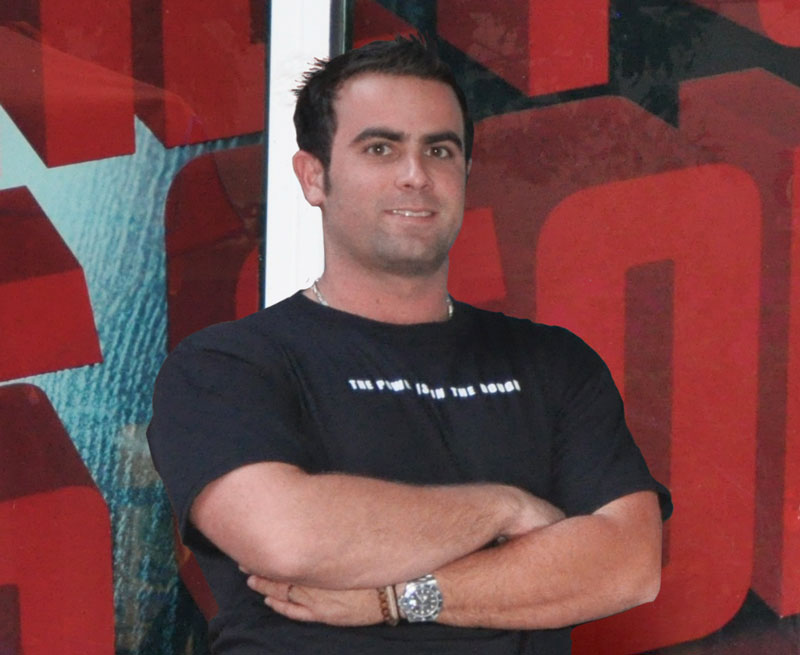After opening his first store in 2004, EJ Martinez, founder of Miami-based Power Pizzeria, ran into trouble almost right away.
“I had a great idea, which was to serve a healthier pizza, and I just started without really knowing what I was doing,” he says. Although he had a strong marketing background and knew how to advertise his product, Martinez didn’t have any experience in the restaurant industry. “I kind of dove into it without really knowing how to track inventory, provide timely delivery, or create a consistent product.”
After racking up “a lot of angry customers,” and with P&Ls that didn’t look good, Martinez decided to close the store and regroup.
In 2010, Sbarro ran into its own series of devastating problems. Product and service offerings had gone stale, sales were dropping, and the Melville, New York–based brand’s financial position was grim. James Greco, who came on as CEO in early 2012, says the company’s customer feedback from that time painted a bleak picture.
“Guests felt our food offerings were inconsistent in terms of taste, temperature, and freshness, and that our service was often not a great representation of hospitality,” he says. Rising commodity costs and a stalled economy didn’t help matters, and Sbarro filed for bankruptcy in April 2011.
While Power Pizzeria’s demise was swift, Sbarro’s warning signs had been present for some time before its meltdown. Red flags took many forms, Greco says, including the “flattening of sales, an increase in complaints, or a reduction in overall satisfaction scores.” Further, stagnation in the brand’s menu, service systems, and even recruiting and training practices, he says, should have been a signal to the organization that adhering to the status quo would eventually lead to long-term decline.
“There are examples throughout history of businesses that, when they’re at the top of their game, they’re either not motivated or are afraid to make any change,” Greco says. “And then, as time marches on, they fall behind other new, more aggressive competitors.”
Fred LeFranc, founding partner at restaurant and hospitality consultant Results Thru Strategy in Charlotte, North Carolina, ticks through a no-nonsense list of the warning flags every CEO should be on the lookout for: “declining sales, declining profits, declining traffic.” But even if sales growth and good profits give a “we’re doing well vibe,” LeFranc says, deteriorating customer satisfaction should set off alarms at the C-level.
“That’s the canary in the coal mine,” he says. “If your guest satisfaction scores are dropping, you know that within six months you’ll start seeing it on the top line.”
Innovation became Greco’s mantra in putting Sbarro back on a path to success. He says improved and updated products were needed, but so were new approaches to service. People today are more pressed for time, Greco says, adding that it makes them more demanding.
“That means what were acceptable levels of service for hospitality five years ago are now subpar,” he says. He also says customers have increasingly sophisticated palates and that quick serves need to be constantly improving the taste and quality of their products and ingredients to meet these higher expectations.
Martinez knew he needed help to relaunch Power Pizzeria, and went after it with gusto after the store closed. He attended pizza shows to learn the business and hired a consultant to get things back on track. The consultant was able to help Martinez understand the need for things like portion cups and frequent inventory counts.
“That stopped the bleeding as far as the back of house was concerned,” he says. But the damage with customers had already been done. As the head of the company, Martinez says, he had to find a way to rebuild the brand. He decided to launch at a new location, in hopes he could leave the initial bad image behind.
“When we opened our second store, we applied everything we learned from the mistakes we made on the first one and just gave it another round in a different area,” he says. Power Pizzeria now has five company-owned and two franchised stores, and Martinez says the brand is proof that failure doesn’t have to mean the end of the road. “We just listen to the customers,” he says, “because they’re the ones who really tell you how the business is operating.”
“The hardest thing for any CEO to do is to ask for help, instead of expecting to have all the answers themselves,” LeFranc says. He believes an outside perspective—be it a consultant, a board of directors, or even external measurements—can help a CEO step back and see where shifts need to occur within the environment to create a healthier company.
LeFranc adds that brands that are living off their past successes are often most in need of help, because “they’re still looking at press clippings and seeing how great things are.” Those companies should be constantly looking forward, examining their statistics for signs of softness in traffic, a drop in customer satisfaction, or anything else that might spell trouble ahead, he says.
And for companies committed to success, Greco says, much of the forward momentum needs to be coming straight from the top.
“You should have a little voice in your head nagging you,” he says. “Nagging you about how you can do things better to ensure you continue to be a leader next year and the year after that.”








